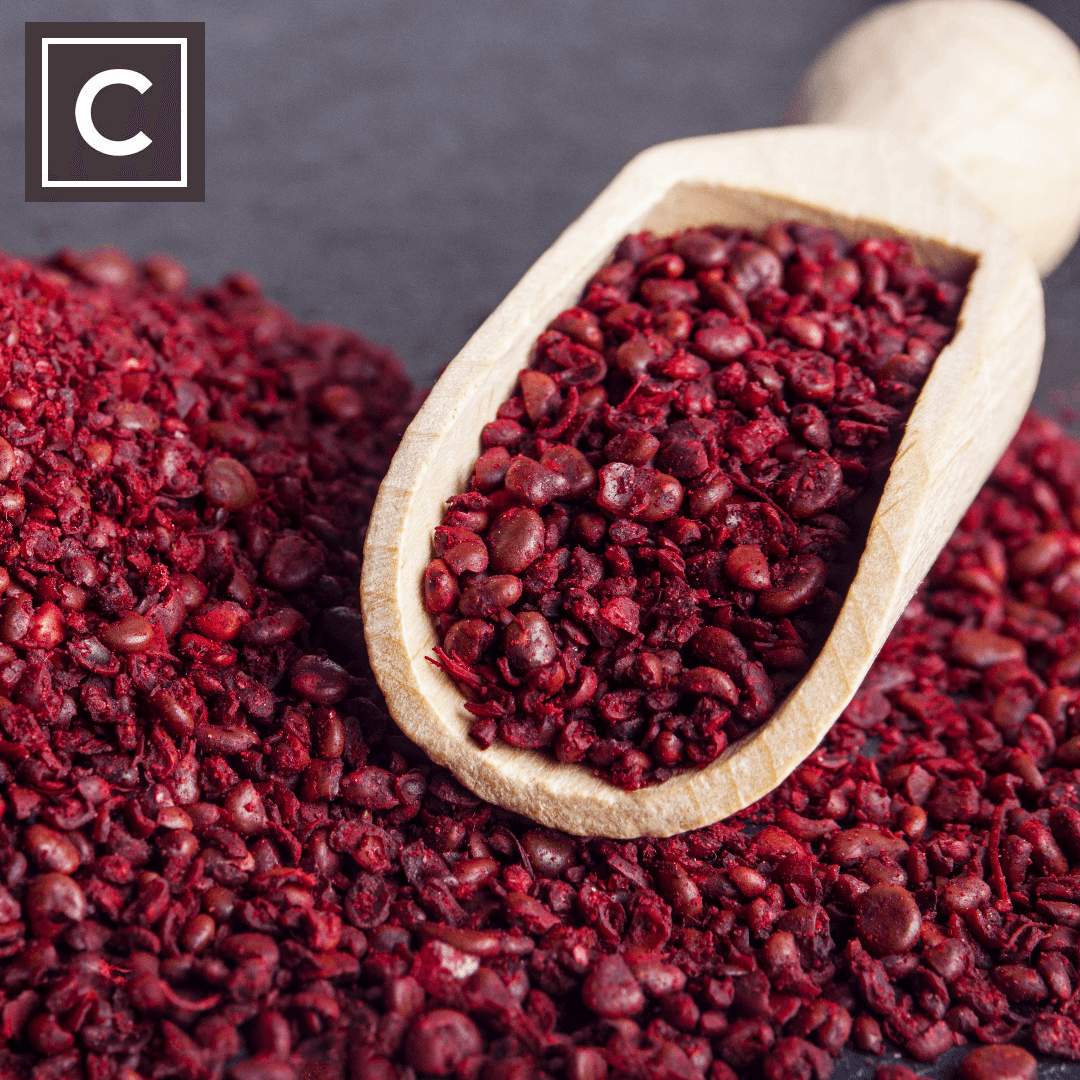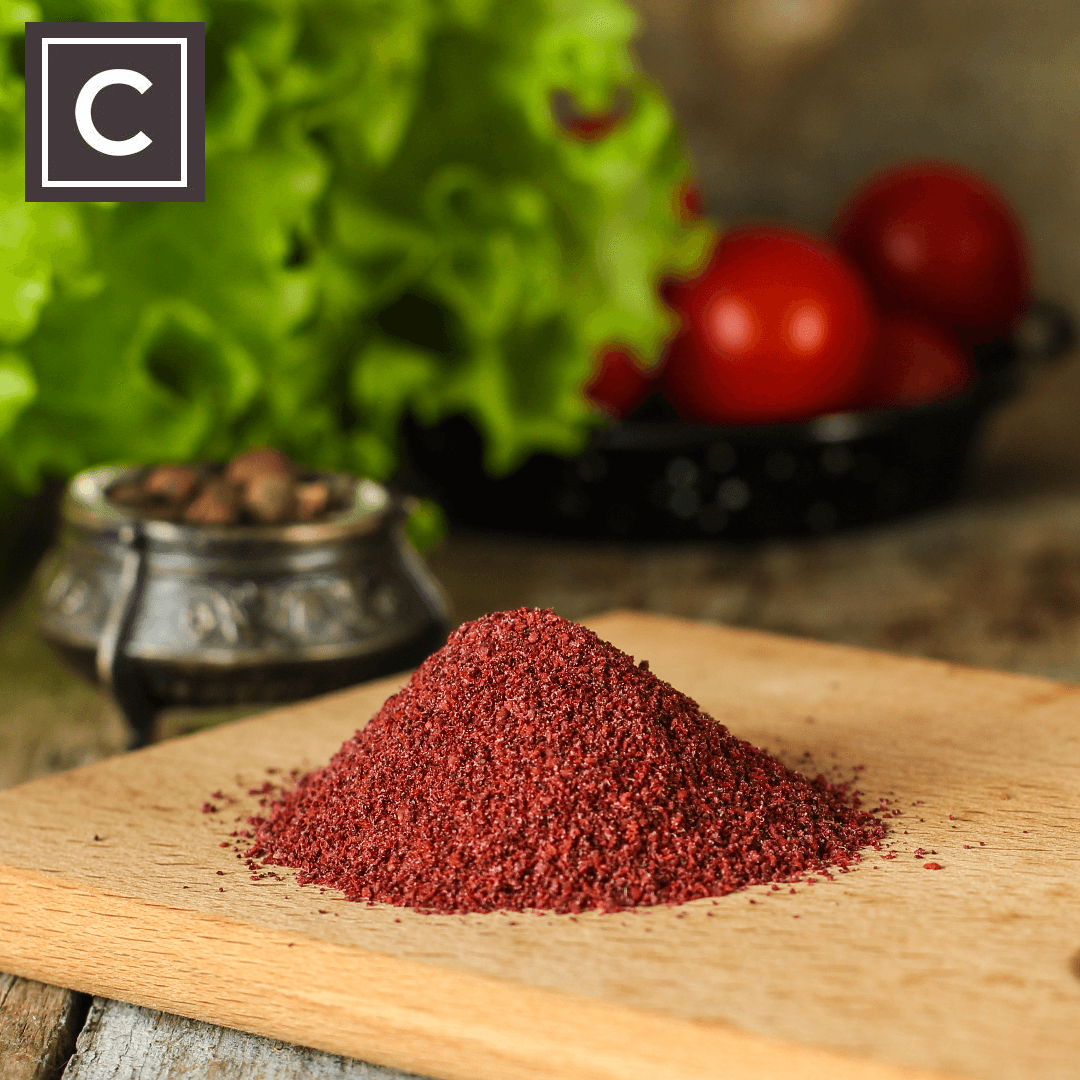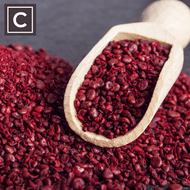Ingredient Glossary: Sumac
Posted by Emily on 1st Dec 2019 Reading Time:
Description: A drupe that is sun-dried and ground
Flavour Profile: Vibrant, citrusy, tart, floral

Associated Cuisines: Native American, Middle Eastern and Mediterranean cuisines such as Palestinian, Lebanese, Turkish, Armenian, Greek and more
Storage: To maintain its freshness, sumac should be stored in a cool, dark, and dry place for up to one year before it loses its flavour.
If there was a Middle Eastern dish gracing the table, it was almost always garnished with sumac. Sprinkle it over everything from hummus to baba ganoush, and it acts as a colourful addition in various meat dishes.
Its vivid, tangy taste is a crucial part of many Middle Eastern and Mediterranean recipes, but it's also an adaptable spice suitable for many cuisines.
What is Sumac?
Sumac is a small, fuzzy drupe that grows in clusters on trees from the Rhus genus, part of the Anacardiaceae family, including pistachios, cashews, mangoes, and mastic. Sumac trees are native to the Mediterranean, Africa, Asia, and North America. However, not all sumac plants are safe; those yielding white berries or having red stems and short leaves are considered toxic.
The name "sumac" is derived from the Arabic word "summaq," meaning "red." Its global origins are difficult to pinpoint, but various species are native to multiple continents. The fruit has been used for thousands of years, not only as a spice but also for medicinal purposes and as a dye. Before lemons arrived in Europe, Romans used sumac as a tangy seasoning.
How to Buy and Store Sumac
Sumac is now more commonly found in regular supermarkets, but it's advisable to visit speciality or Middle Eastern stores for the highest quality. Whole sumac is rarer but can be purchased online. Look for sumac with a vivid crimson hue, indicating peak ripeness, and try to taste it, if possible. It should be tangy, bright, and fragrant.

How to Cook with Sumac
Sumac is prevalent in Middle Eastern and Mediterranean cuisines and is a key ingredient in dishes like msakhan from Palestine and za'atar. Its versatility extends to anything requiring a touch of acidity.
It adds tartness without introducing additional liquid, making it ideal for moist salads like fattoush. It's also perfect as a finishing touch on dishes, releasing bursts of flavour and visual appeal. Some also claim that sumac can act as a meat tenderiser due to its active enzymes.
Creativity in the kitchen is encouraged, and sumac's applications are limitless. It pairs well with anything from eggs and chips to baked goods. Reem Assil has even used sumac to make a sweet-and-sour candied fruit, praising its vibrant red hue.

